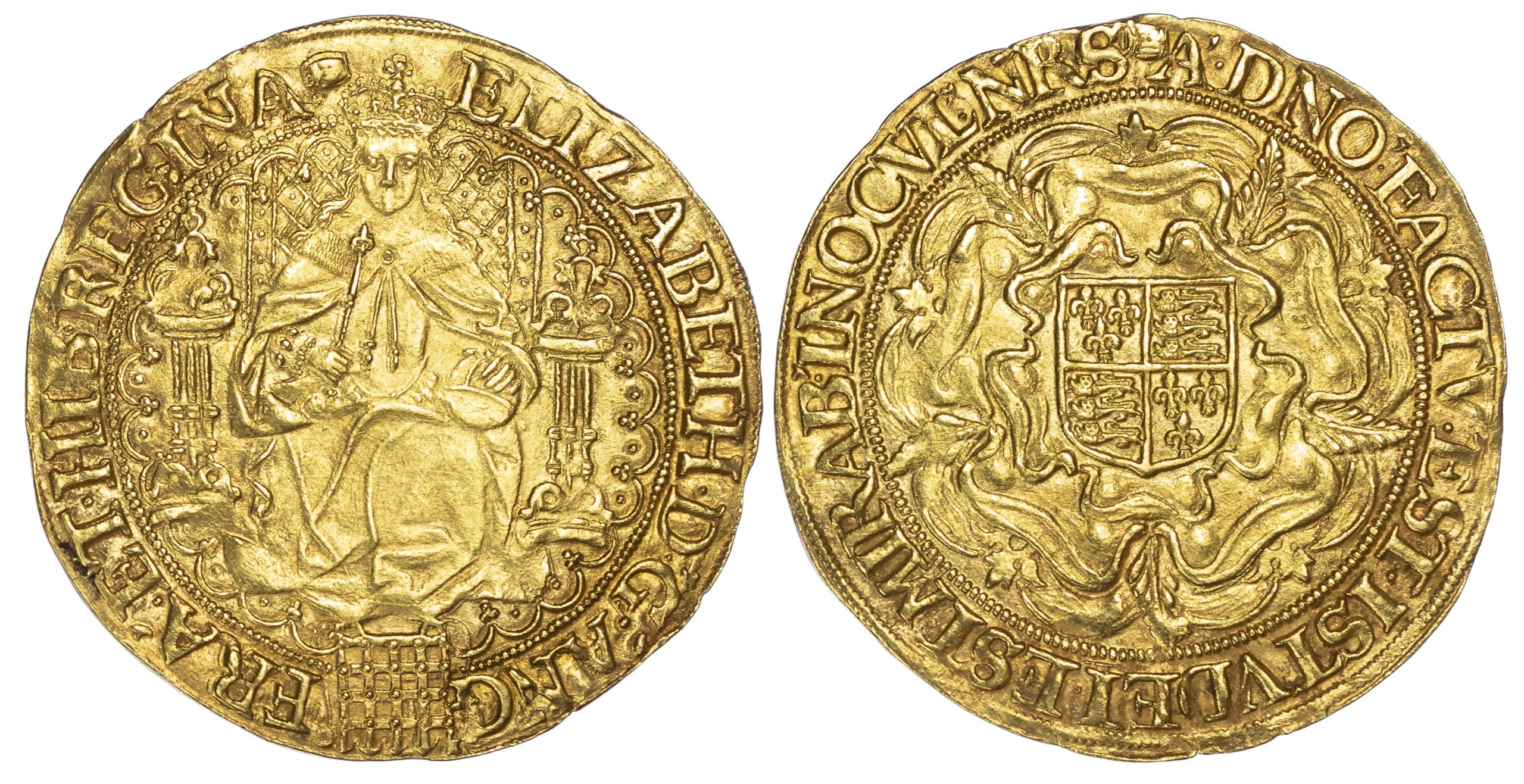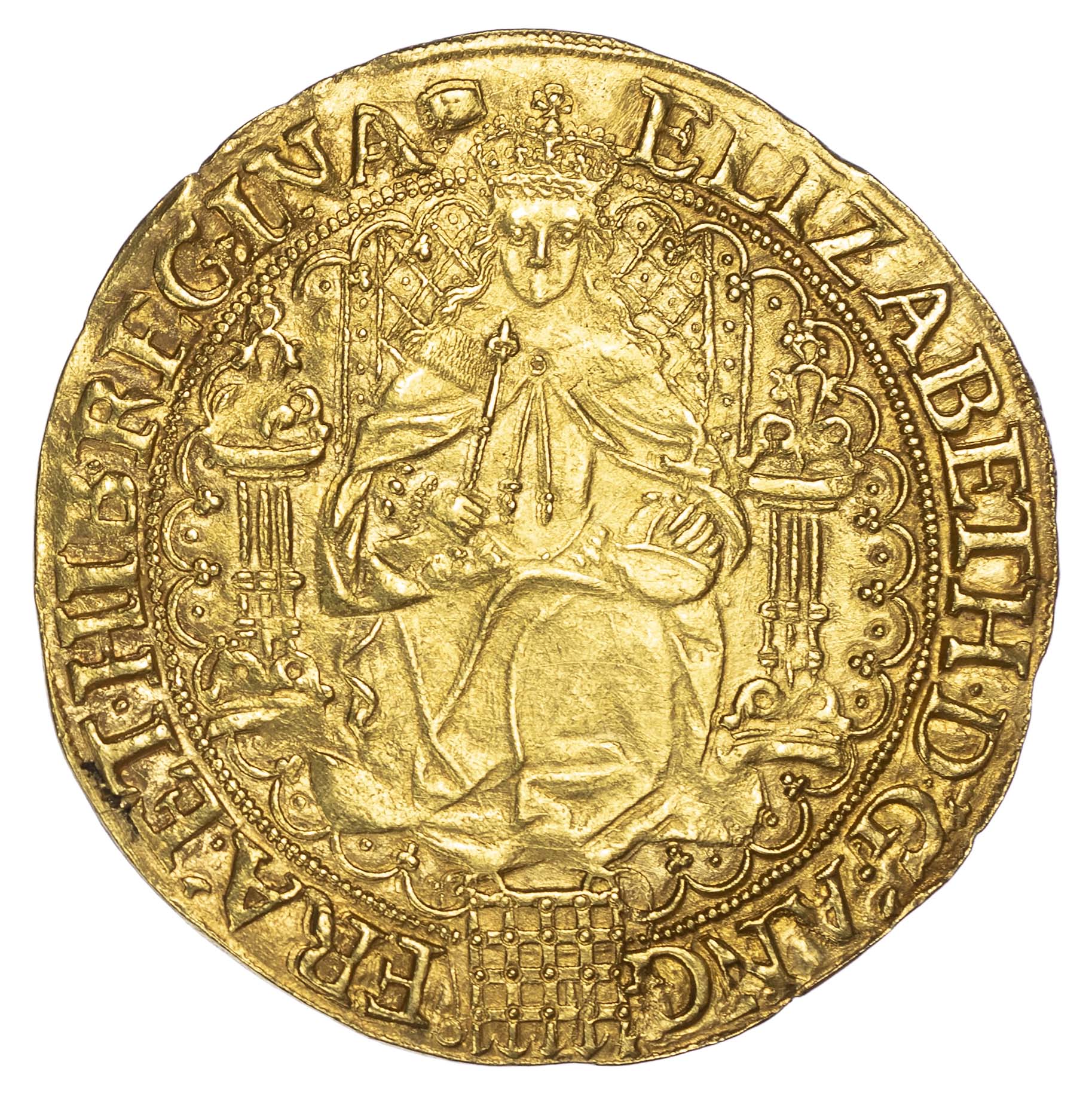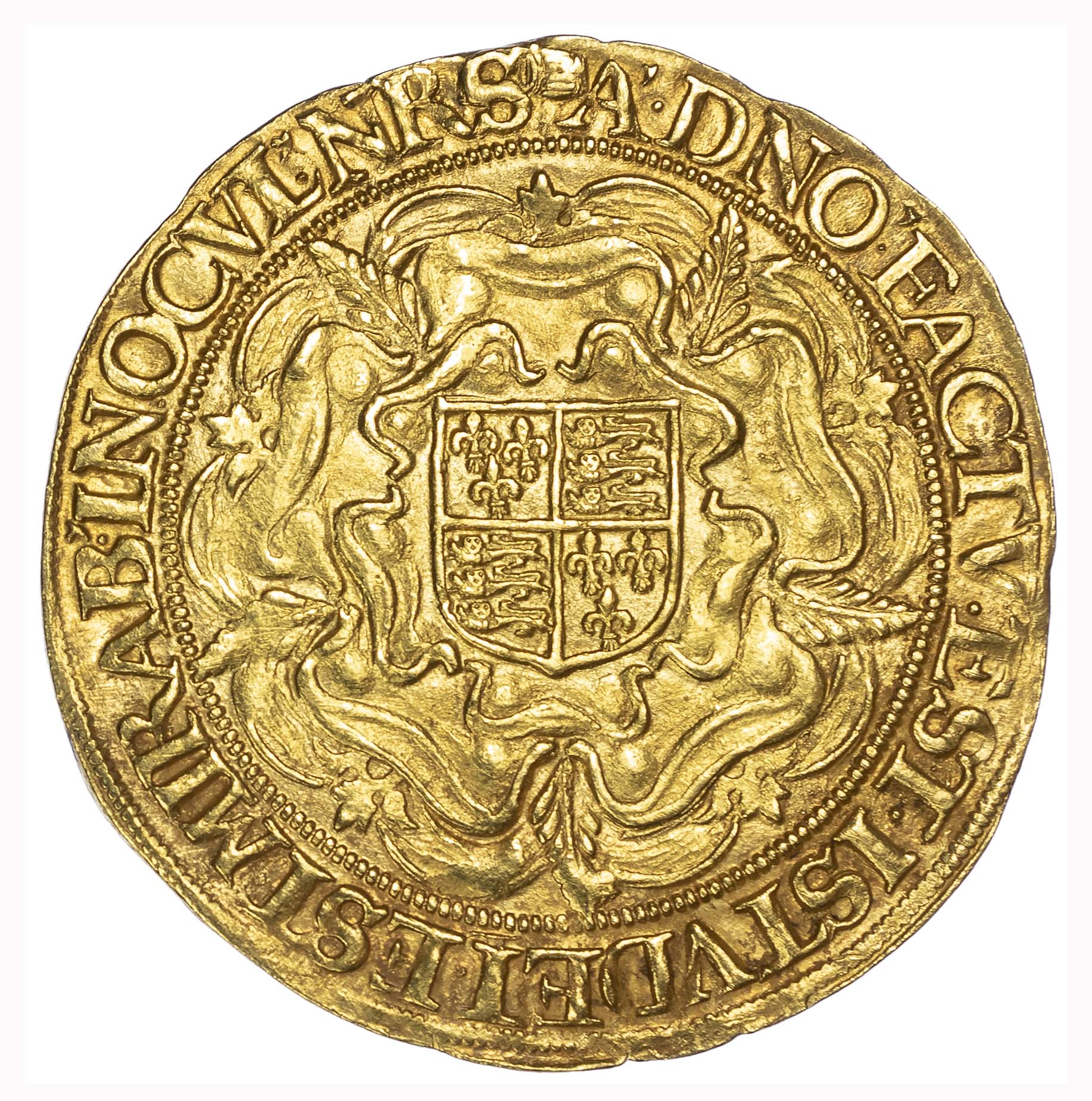Description
Elizabeth I (1558-1603), ‘Fine’ Gold Sovereign of thirty shillings, sixth issue [1583 -1600] initial tun (1592-95). Elizabeth seated facing on ornate throne with pellets on back and pillars with single pellets, holding lis-tipped sceptre in right hand, left hand set on globus cruciger propped on her knee; all within tressure of arches; portcullis with chains below, reads ELIZABETH D G ANG FRA ET HI REGINA. Rev, quartered shield of arms set on a Tudor rose, reads A DNO FACTV EST ISTVD ET EST MIRAB IN
OCVLIS NRS, 14.98g (S2529; N2003; Schneider 783 (same dies); Brown & Comber A26). Choice extremely fine, parts better and about as struck. A superb example.
Comparable to the Comber sixth issue sovereign which realised £93,000 inclusive of premium.
From the Long Valley River Collection.
Representing a huge purchasing power at the time, this coin of 30 shillings’ value was made of .995-fine, or nearly
pure, gold. Most pieces did not enter ordinary commerce but were retained in and around the royal court; that this specimen was not worn or damaged, even bent, suggests that it was special. The denomination was, literally, a piece of money meant for the aristocracy and for royalty. Judging by its physical appearance, this one especially so! Turning now to its iconography, Tudor history is rife with tales of attempted coups on the monarch, as a number of aristocrats could validly claim their own right to the throne, thus, the bold image of Elizabeth enthroned and her obverse titles combined on this, the largest gold denomination, with the Latin legend on its reverse, translating to mean ‘This is the Lord’s doing and it is marvellous in our eyes’ (from the Psalms), clearly emphasized the Queen’s sovereignty. This particular specimen, however, possesses an unusual historical appeal: the crescent initial (or mint) mark was employed from 1 June 1587 through 31 January 1589 or 1590; its use on the reverse side, over the escallop (last used in May 1587) suggests a time of issue of approximately 1587-88. This was the time-frame of the defeat of the Spanish Armada, which began in the spring of 1587 with Drake’s raid on Cadiz and culminated during the summer of 1588 with the final sea-battle of 29 July. The British victory was due to a combination of maritime skill, the use of smaller and faster warships equipped with long-range cannon, and luck. The Spanish fleet of 130 vessels manned by 8,000 sailors carried some 40,000 soldiers intended to be landed on the coast of Kent. Not one of them ever stepped ashore as the Royal Navy wreaked havoc on the Armada. British losses were light against a seemingly overwhelming force, as they had been at Agincourt in 1415. The Queen hailed the victory with a memorable speech. Her sovereignty was secured and this magnificent coin was minted at this very time.





